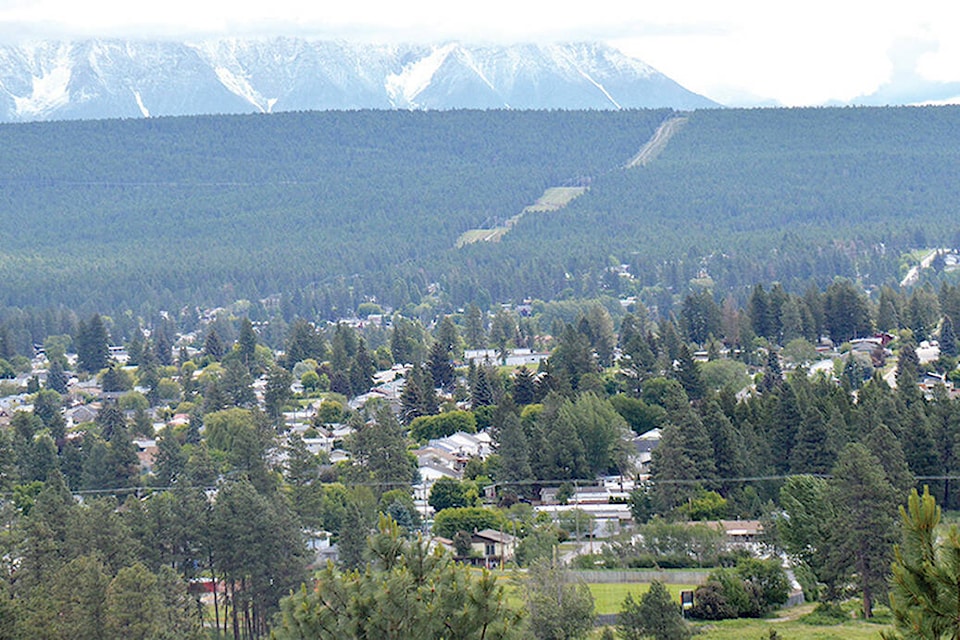The province has recently passed a bunch of legislation aimed at expanding access to housing, which has implications for local governments that manage aspects such as land-use, zoning and official community plans.
The Union of B.C. Municipalities, which represents and advocates for issues affecting local governments in the province, held a housing summit on Feb. 13-14 to explore the impact that a series of new provincial legislation will have on cities and rural areas in the province.
Cranbrook city councillor Wes Graham, who also sits on the UBCM executive committee, was in attendance during the summit, taking in workshops and meeting with fellow local government representatives to compare and contrast how the legislation is affecting different jurisdictions.
Senior government officials, such as Anne Kang, BC’s municipal affairs minister, and Sean Fraser, the federal housing minister, were also in attendance.
“It was an educational summit on the legislation that the government put in without consultation,” said Graham.
Some of that legislation, such as Bill 44, will allow for up to four units on lots that are zoned for single family residential, and mandating more frequent updates to zoning and Official Community Plans (OCP).
“I think to put it in a Cranbrook context, is our community doesn’t know that your neighbour can put a four-plex in their backyard now,” said Graham. “What that does for us as a community is that it puts a strain on our infrastructure that might not have the capacity. When you have a block built out in a residential area, you don’t need to oversize the pipes because the block is built out.
“Now, if you’re starting to put carriage houses in there, we have to dig up that pipe to handle that extra capacity and that becomes an issue in the Cranbrook perspective…we don’t have the capacity in some of our rural and outskirt neighbourhoods.”
Infrastructure capacity was a common theme from most local government representatives, as increasing density puts pressure on existing systems that potentially need oversizing.
“This isn’t just Cranbrook, this is from major cities right down to the smaller communities…there’s not one community in Canada that has adequate infrastructure to take all this on,” said Mayor Wayne Price.
“We can’t even look after what we need right now because of infrastructure concerns, we just have not been getting the infrastructure-related funding that we did ten, fifteen, twenty years ago.”
While infrastructure is a core responsibility of municipalities, those kinds of capital costs can be astronomical, especially in the current environment, which has significantly escalated in recent years.
For example, at a city council meeting last year, staff reported that the approximate cost to build out one city block, complete with roads and underlying water and sewer infrastructure, is up to roughly $1.5 million.
And when it comes to new housing builds, developers are responsible for paying infrastructure costs to hook up to existing city services. However, depending on what existing services are already in place, the capacity may need to be oversized, depending on neighbourhood density.
Typically, both the provincial and federal levels of government can step in to help fund large capital infrastructure projects through a number of programs, such as the Canada Community-Building Fund (formerly the Federal Gas Tax fund), however, sometimes those can come with narrow scopes or with strings attached that may not align with local priorities, Graham said.
While the province’s housing legislation is designed to spur more densification, among other outcomes, there remains a housing gap in Cranbrook, particularly for seniors and low income individuals, which is out of the scope of $2 billion (followed by a matching $2 billion from the federal government) recently announced by the province for middle-income housing.
Cranbrook’s latest Housing Needs Report identified that 1,400 units are going to be needed over the next decade in the city, with nearly three quarters of that focusing on low income and affordable options.
“The city can’t address the whole [housing] continuum, so if we’re going to get involved in the housing game — which isn’t really our mandate, but we don’t really have a choice now — we are considering seniors and low-income workers as our priority,” said Price.
But beyond infrastructure concerns, other aspects of provincial housing legislation is stirring conversation amongst local government officials, such as Bill 45, which could potentially impact how municipalities manage encampments.
That legislation was put on pause by the province following pushback from local governments concerned about seeking injunctions given that shelter space must be available, as mandated by court rulings, which can be a challenge given that there’s a significant lack of shelter spaces in cities across the province.
In Cranbrook, renovations are underway for a 40-bed shelter that is expected to be open by the summer. However, the latest point-in-time count, typically an undercount based on methodology, reported identified 116 individuals experiencing homelessness in 2023.
The province, through BC Housing, is responsbile for providing and funding shelter spaces, typically through partnerships with non-profits.
